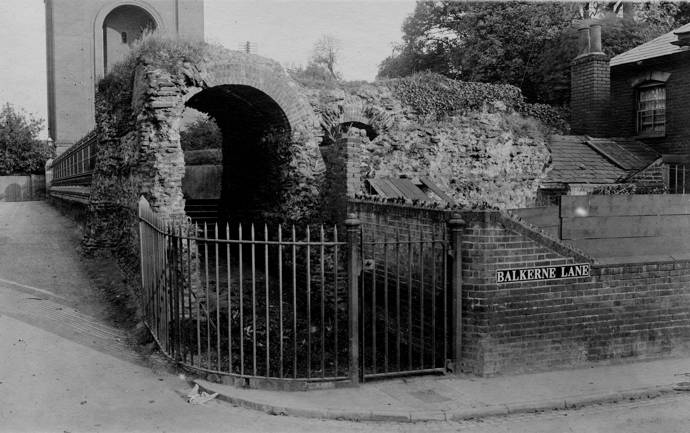The Balkerne Gate
- Posted in:
- Roman Gate Wall
The Balkerne Gate was the main (west) gate into the walled Roman town and one of six gates around the circuit of the Town Wall. The Gate incorporated an existing free-standing monumental arch (with two archways) built to celebrate the Claudian conquest of Britain, probably in the AD 50s, and faced with tufa stone brought from the Hampshire coast. This created a double-arched gateway with flanking walkway arches and external guardrooms, 30m wide N to S, as shown in the reconstruction drawing below by Peter Gray. The archways formed the main carriageways with the addition of a footway and a bastion on both sides to form the Balkerne Gate.

In the late 3rd century, the Balkerne Gate was closed and the external defensive ditch was extended to close off the road (i.e. the ditch was dug across the carriageways). The monumental arch and part of the rest of the gate was demolished and the rubble used to block the gap; the south pedestrian walkway, however, seems to have been left open. The south-west gate, or Head Gate became the main gate into the town after the Balkerne Gate was blocked in the late 3rd century, and it was the principal gate into the later medieval town.
The surviving (southern) pedestrian archway of the Balkerne Gate, still in use today, and southern bastion (and also part of the northern bastion) is only a small part of what was once an impressive entrance into Colchester, in keeping with the importance of the town. The base of the blocked carriageways are visible below the parapet of the Hole in the Wall public house.

The Balkerne Gate in 1913. Notice the house that is built against the Wall, to the south of the Gate. This, and other buildings along Balkerne Lane, were demolished in advance of the construction of the dual carriageway in 1977.